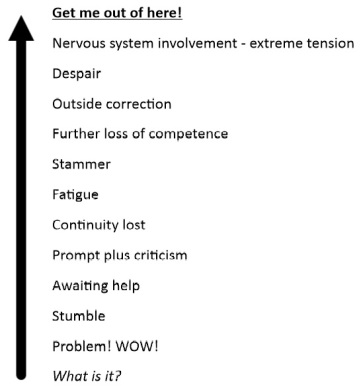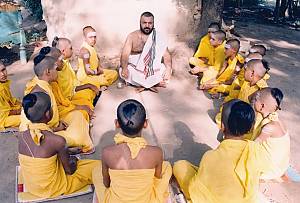Writing reflects our way of tying to observe our thoughts and mind.
This article has been a long time coming. To try and approach the complex issues of the relationship between mindfulness and writing has been interesting but difficult. Any attempt to understand writing and mindfulness must begin with the relationship between writing and thought.
Thinking is the business of the brain. Mindfulness is a way of potentially observing our own minds from the ‘inside’, to see how we know what we know or how we do what we do, and so it is with writing. Writing, therefore, is naturally a mindful experience. To practice writing is to practice mindfulness.
We have an enormously complex and efficient theory of the world in our head, so coherent and comprehensive that it enables us to write and understand sentences we have never heard or read before in our lives. Writing, like mindfulness, is a way to directly gaze into our own mind to explore what this theory is; to examine how it works. Children, (as with most adults) traditionally, find it very hard to observe their own thinking ‘as it comes’ but they can observe the products of their thoughts through what they write very easily. This is what makes writing one of the most powerful tools a child can have.
It’s important to look at the relationship between mindfulness and writing.
The uses of writing for children (and indeed adults) is often;
- To establish or reflect personal relationships with others. – Interactional ‘me and you’
- To express our perception of ourselves. – Personal ‘awareness of self’
- As a record of our present moment. Perpetuating ‘how it is’
The uses of mindfulness for children (and indeed adults) is often;
- To establish or reflect personal relationships with others. (Compassion)
- To examine our perception of ourselves. (Self-examination)
- To be in the present moment.
Just as mindfulness is a way of separating our ideas from ourselves in a way that is easy for us to examine, so it is with writing.
Stimulus -> // -> Reaction
Stimulus -> Space/Time -> Response
As the above diagram shows mindfulness can provide space between stimulus and response. The same can be said of writing for children. Children can be rehearsed or otherwise performed in their mind. It not only provides opportunity to try out and even refine things they want to say on paper, but can also give rise to new ideas they did not think they were capable of – or know were there.
Writing, like mindfulness, is a tool that helps organise and develop the possibilities of our own minds. Writing can be an extension of a meditative practice. To make sense of and reflect on the world.
Writing is the slowest of all the uses of language. It is at times painfully slow! The average rate of writing being around 10-12 words a minute for children. The remarkable thing is that thought can slow down enough to produce itself in words. Not only is this is mindfulness in practice but also a way mindfulness can benefit children’s writing.
Observing the products of thought is in many respects the same way that meditators attempt to observe thought itself. Writing for children is an extremely efficient way of gaining access to knowledge that they can’t observe directly.
I would argue that is is more efficient than speaking in many respects because of its relative permanence to the present moment and because its easy to stand back and observe it as an independent entity. Exactly what is required from meditation on our thoughts.
The beautiful and magical thing that writing can do for children is more than just reflect on underlying thought. Writing liberates it and develops it.
By observing the action of writing, children can learn things about themselves they may not have known for themselves and share this with themselves & others. This allows them to explore their brain’s potential. It may be better to regard this as potential, rather than a settled state or finished structure, a potential that may constantly expand…





 An important aspect of oral tradition is of course that it is largely learned in union situations – and gains in its social meaning from that ‘togetherness’ – that ‘interdependent spirit’. Chant, song, dance and linguistic rituals are mindful because they tend to be rhythmic and set to some form of chant or melody which often focuses the mind. Chant, song, dance and linguistic ritual are among the most powerful forms of human learning; primitively satisfying, deeply memorable and globally meaningful. Much of its power comes from the sense of security generated by repetition, familiarity and universality.
An important aspect of oral tradition is of course that it is largely learned in union situations – and gains in its social meaning from that ‘togetherness’ – that ‘interdependent spirit’. Chant, song, dance and linguistic rituals are mindful because they tend to be rhythmic and set to some form of chant or melody which often focuses the mind. Chant, song, dance and linguistic ritual are among the most powerful forms of human learning; primitively satisfying, deeply memorable and globally meaningful. Much of its power comes from the sense of security generated by repetition, familiarity and universality.

